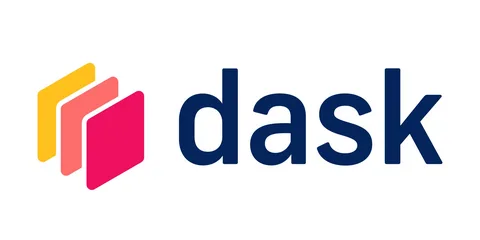The ability to handle large datasets efficiently is critical in the modern data-driven world. Traditional tools like pandas work well with small to moderately sized datasets but struggle with massive datasets that exceed system memory. This is where Dask, an advanced parallel computing library, comes into play. Dask enables scalable data analysis by breaking down large computations into smaller, manageable chunks, leveraging parallel processing and distributed computing. For aspiring data professionals looking to master these capabilities, a Data Science Course in Hyderabad provides the perfect foundation to explore tools like Dask.
Understanding Dask and Its Core Features
Dask is a flexible Python library designed for parallel computing. It extends familiar Python data structures like pandas DataFrames and NumPy arrays to work seamlessly with larger-than-memory datasets. Unlike Spark, a separate ecosystem, Dask integrates naturally with Python’s existing ecosystem, making it a preferred choice for many data scientists. A Data Science Course in Hyderabad covers these critical topics, helping learners understand how to transition from pandas to Dask for large-scale data analysis.
D ask’s core features include:
- Dask DataFrame: Similar to pandas DataFrame but designed for large datasets.
- Dask Array: An extension of NumPy arrays for big data processing.
- Dask Bag: Useful for handling semi-structured or unstructured data.
- Dask Delayed: Enables parallel execution of Python functions, improving computational efficiency.
Why Choose Dask for Scalable Data Analysis?
When working with pandas, data professionals often struggle with memory limitations and slow processing times. Dask addresses these issues by distributing computations across multiple CPU cores or clusters. This capability makes it an essential tool for data engineers, analysts, and scientists handling complex data pipelines. Understanding how to integrate Dask into real-world scenarios is crucial, and a Data Scientist Course offers hands-on training in this area.
Dask vs. Pandas: A Performance Comparison
Pandas are widely used for data manipulation, but become inefficient when the dataset grows. Dask bridges this gap by splitting large datasets into smaller partitions and processing them in parallel. This allows for:
- Faster computation times
- Efficient memory usage
- Seamless transition from small-scale to large-scale data processing
Enrolling in a Data Scientist Course allows learners to perform practical comparisons between pandas and Dask, gaining a deeper understanding of the advantages of scalable computing.
Setting Up Dask for Data Analysis
Getting started with Dask is straightforward. It can be installed using pip:
pip install dask
Once installed, users can import and create a Dask DataFrame similar to pandas:
import dask.dataframe as dd
df = dd.read_csv(‘large_dataset.csv’)
print(df.head())
This simple transition from pandas to Dask allows users to work with datasets that do not fit into memory. For beginners, a course provides guided exercises on installing, configuring, and optimising Dask for various data processing needs.
Dask’s Parallel Processing Capabilities
Dask’s most significant advantage is its ability to perform parallel processing efficiently. Traditional pandas operations process data sequentially, whereas Dask executes tasks in parallel, leveraging multiple CPU cores. The parallelism is handled through Dask’s task scheduler, which optimally distributes workloads. Understanding this concept through a course allows learners to enhance data processing speed and efficiency in real-world applications.
For example, performing group-by operations on a large dataset using Dask:
df.groupby(‘column_name’).mean().compute()
The compute() function triggers execution, processing the computation in parallel. This approach significantly reduces execution time for large-scale analytics.
Scaling Up with Dask Distributed
Dask offers a distributed computing environment, allowing users to scale computations beyond a single machine. This feature is essential for handling enterprise-level big data challenges. Dask Distributed provides a client-server architecture where computations are distributed across multiple nodes.
To enable Dask Distributed:
from dask.distributed import Client
client = Client()
print(client)
This setup enhances scalability and efficiency. Mastering Dask Distributed is crucial for data professionals, and a course provides in-depth knowledge on configuring and using it effectively.
Integrating Dask with Machine Learning Workflows
Dask integrates with machine learning libraries such as Scikit-Learn, TensorFlow, and XGBoost. This integration allows data scientists to preprocess large datasets efficiently before feeding them into machine learning models. A Data Scientist Course introduces learners to these integrations and demonstrates how Dask enhances the ML pipeline.
Example of using Dask with Scikit-Learn:
from dask_ml.model_selection import train_test_split
from dask_ml.linear_model import LogisticRegression
X_train, X_test, y_train, y_test = train_test_split(df.drop(‘target’, axis=1), df[‘target’])
model = LogisticRegression()
model.fit(X_train, y_train)
This enables scalable machine learning workflows, reducing training time significantly.
Use Cases of Dask in Industry
Dask is widely used across various industries, including Exploring Dask for Scalable Data Analysis.
The ability to handle large datasets efficiently is critical in the modern data-driven world. Traditional tools like pandas work well with small to moderately sized datasets but struggle with massive datasets that exceed system memory. This is where Dask, an advanced parallel computing library, comes into play. Dask enables scalable data analysis by breaking down large computations into smaller, manageable chunks, leveraging parallel processing and distributed computing. For aspiring data professionals looking to master these capabilities, a Data Scientist Course provides the perfect foundation to explore tools like Dask.
Conclusion
Dask is a powerful tool for scalable data analysis, offering seamless integration with Python’s ecosystem while providing parallel and distributed computing capabilities. It addresses the limitations of pandas and NumPy, making it an ideal solution for handling large datasets. Whether you’re an aspiring data scientist or a seasoned analyst, mastering Dask can significantly enhance your efficiency in processing big data. Enrolling in a Data Science Course in Hyderabad ensures hands-on experience with Dask, enabling professionals to leverage its full potential in real-world applications.
ExcelR – Data Science, Data Analytics and Business Analyst Course Training in Hyderabad
Address: Cyber Towers, PHASE-2, 5th Floor, Quadrant-2, HITEC City, Hyderabad, Telangana 500081
Phone: 096321 56744

